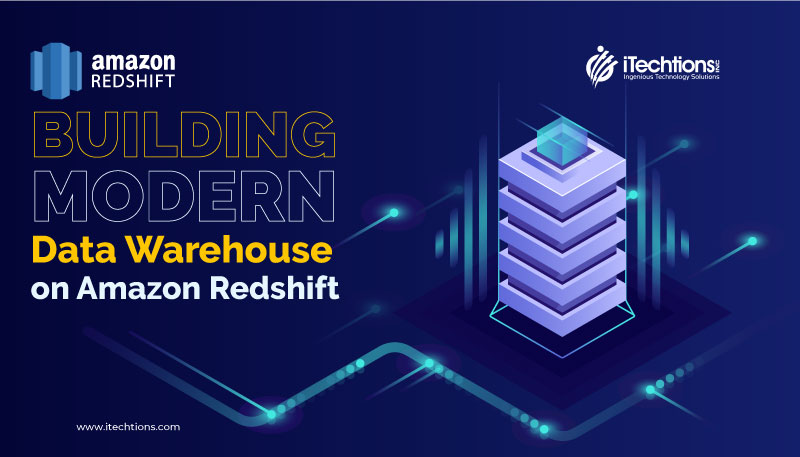IN BRIEF
- Amazon Redshift, launched in 2013 by Amazon Web Services (AWS), is a fully-managed, petabyte-scale, enterprise-grade cloud data warehouse.
- The ease-of-use features, such as automated workload management and query optimization, contribute to a smooth user experience without the need for extensive tuning andoperation expertise.
- AWS, with an estimated market share of more than 30%, is continuing to outpace its competitors and cement its position as the leading cloud service provider worldwide.
Introduction to Amazon Redshift
Amazon Redshift, launched in 2013 by Amazon Web Services (AWS), is a fully-managed, petabyte-scale, enterprise-grade cloud data warehouse. It revolutionized the data warehousing industry by providing a cost-effective and efficient solution for analyzing large volumes of data using existing business intelligence tools. This cloud service quickly gained popularity, becoming the fastest growing service in AWS, with tens of thousands of customers worldwide using it to process exabytes of data daily.
Over the years, Amazon Redshift has continuously delivered innovations to meet the evolving
needs of its customers. Through architectural enhancements, it has maintained industry-leading
performance and scalability. Redshift’s federated queries enable integration with transactional databases like DynamoDB and Aurora, as well as with Amazon S3 object storage and Amazon Sagemaker’s ML services. It also supports the ingestion and querying of semistructured data
utilizing the SUPER type and PartiQL.
The architecture of Amazon Redshift consists of a single coordinator (leader) node and multiple
worker (compute) nodes. This column-oriented, massively parallel processing approach enables
Redshift to execute increasingly complex analytical queries with high-performance results.
Redshift’s ease-of-use has improved significantly, thanks to automated workload management,
table optimization, and query rewriting features. These advancements contribute to superior
out-of-the-box query performance, enhancing the overall user experience.
Redshift’s capabilities have expanded to include interfacing with additional data types, such as
semistructured and spatial data, as well as seamless integration with various purpose-built AWS
services. This integration provides customers with access to a wide range of analytics
capabilities, making Amazon Redshift a best-of-class solution for cloud data warehousing.
Acknowledgements go to the vast number of Redshift customers whose feedback has shaped
the product’s continuous innovation and improvement. Amazon Redshift remains an
industry-leading solution due to its scalable architecture, ease-of-use, performance, and tight
integration with the broader AWS ecosystem.
In summary, Amazon Redshift is a fully-managed, petabyte-scale, cloud data warehouse that
offers cost-effective and efficient analysis of large data volumes. Its continuous innovations,
performance-driven architecture, ease-of-use features, and seamless integration with purpose-built AWS services have made it a preferred choice for organizations worldwide
processing substantial amounts of data.
Features and Architecture of Amazon Redshift
Amazon Redshift offers a range of features and a robust architecture that make it a powerful
and efficient data warehousing solution in the cloud.
High-performance execution of complex analytical queries
Amazon Redshift is well-known for its ability to deliver high-performance execution of complex analytical queries. It achieves this through various architectural enhancements, such as columnar storage and data compression techniques. These optimizations enable Redshift to process and analyze large volumes of data efficiently, allowing users to derive actionable insights quickly.
Architecture of Amazon Redshift
At the core of Amazon Redshift’s architecture is the separation of responsibilities between a coordinator node and multiple worker nodes. The coordinator node distributes queries across the worker nodes, which then parallelize the execution of the queries. This distributed architecture allows Redshift to handle massive amounts of data and execute queries in parallel, resulting in faster query performance.
Scalability and ability to handle large volumes of data and concurrent users
Amazon Redshift is built to scale. It can handle petabyte-scale data warehouse workloads with ease. By leveraging the massively parallel processing (MPP) architecture, Redshift’s performance scales
linearly as more compute resources are added. This capability ensures that users can seamlessly handle increasing volumes of data and concurrent user queries without compromising performance.
Federated queries to transactional databases and Amazon S3 object storage:
Amazon Redshift allows users to federate queries across transactional databases and data stored in
Amazon S3. This feature enables organizations to combine their operational data stored in databases with their data lake on S3, providing a unified view for analysis. Users can seamlessly query and analyze data from multiple sources, further enhancing the flexibility and power of Redshift.
Leveraging Glue Elastic Views for Materialized Views
Amazon Redshift leverages AWS Glue Elastic Views to automatically create and maintain materialized views. Materialized views are precomputed query results that improve query performance by reducing the need to execute complex queries repeatedly. With Glue Elastic Views, Redshift can automatically optimize queries by leveraging materialized views, allowing for superior out-of-the-box query performance.
Support for ingestion and querying of semi-structured data
Amazon Redshift extends its capabilities beyond structured data by providing support for ingesting and querying semi-structured data such as JSON and BSON. This enables users to combine structured and semi-structured data in their analysis, unlocking new possibilities for gaining insights from a
broader range of data sources.
In conclusion, Amazon Redshift’s features and architecture make it a top choice for cloud data warehousing. Its high-performance execution of complex analytical queries, MPP architecture, scalability, federated queries, glue elastic views, and support for semi-structured data contribute to its ability to handle large volumes of data and meet the demands of concurrent users. As
organizations continue to generate and analyze increasing amounts of data, Amazon Redshift provides an efficient and powerful solution for deriving valuable insights.
Ease of Use in Amazon Redshift
One area where Amazon Redshift has seen significant improvement is in ease-of-use. It offers automated workload management, automated table optimization, and automated query rewriting using materialized views, which contribute to superior out-of-the-box query performance. These enhancements help users efficiently analyze their data without the need for extensive tuning and
operation expertise.
Moreover, Amazon Redshift has expanded its capabilities by integrating with additional data
formats, such as semistructured and spatial data, and integrating with various purpose-built AWS services. This integration allows users to leverage the best service for each job and seamlessly integrate with Amazon Redshift. By incorporating these additional data types,
organizations have more flexibility in analyzing diverse datasets and extracting valuable
insights.
Furthermore, the integration with Amazon S3, a scalable object storage service, is a notable
feature of Amazon Redshift. Through the Spectrum feature, Amazon Redshift can access data
stored in open file formats in Amazon S3. This enables exabyte-scale analytics of data lakes
and provides a highly cost-effective solution, with pay-as-you-go billing based on the amount of
data scanned. Spectrum supports various file formats, including Parquet, Text, ORC, and
AVRO. Leveraging a fleet of multi-tenant Spectrum nodes, Redshift performs scans and
aggregations of data efficiently.
The ability to integrate with other AWS services is a significant advantage of Amazon Redshift.
Users can register their external tables in Hive Metastore, AWS Glue, or AWS Lake Formation
catalog to take full advantage of Spectrum’s capabilities. This seamless integration allows
organizations to leverage the power of Amazon Redshift while also utilizing the strengths of
other AWS services, ensuring a comprehensive and efficient data analysis workflow.
In summary, Amazon Redshift is a highly regarded cloud data warehousing solution that offers
ease-of-use, scalability, and integration with the wider AWS ecosystem. Its automated features,
enhanced query performance, and compatibility with various data formats make it a popular
choice for organizations processing large volumes of data. Whether it’s the automated workload
management, the superior out-of-the-box query performance, or the integration with other AWS
services, Amazon Redshift provides a user-friendly environment for effective data analysis and
insights.
Customer-centric Development of Amazon Redshift
Amazon Redshift has always placed a strong emphasis on customer feedback and the commitment to delivering continuous improvements. Recognizing the value of customer input, the development team has actively sought out feedback to shape the evolution of the service.
This customer-centric approach has been crucial in ensuring that Amazon Redshift meets the diverse needs of its user base.
The success of Amazon Redshift can largely be attributed to its customer-centric approach. The team behind the service has shown gratitude towards its customer base and has consistently sought their input to drive innovation. By actively listening to the needs and demands of users,
Redshift has been able to adapt and improve its features and functionalities.
The development team acknowledges that customer satisfaction is key to the success of the service. They understand that in order to stay ahead in an ever-changing technological landscape, they must prioritize customer needs and continually work towards enhancing the user experience. This commitment to customer-centric development has resulted in a product that not only meets the demands of today, but also anticipates the needs of tomorrow.
Furthermore, the high standards set by customers have been instrumental in pushing the boundaries of what is possible with Amazon Redshift. The development team has been challenged by the demands for robust performance, enhanced functionality, and ease of use.
These demands have fueled a culture of innovation and excellence within the Redshift team, constantly pushing them to deliver cutting-edge solutions.
In conclusion, customer-centric development lies at the heart of Amazon Redshift’s success.
The importance placed on continuous feedback and the dedication to delivering improvements
have allowed Redshift to evolve into a best-in-class cloud data warehousing solution.
The integration of customer input into the development process has ensured that Redshift caters to a wide range of customer needs and remains at the forefront of the data warehousing industry.
The strong partnership between the development team and its customers will continue to drive the ongoing success and advancements of Amazon Redshift.
Final Thoughts
In conclusion, Amazon Redshift is a game-changing cloud data warehousing solution that offers
organizations a cost-effective, scalable, and high-performing platform for analyzing large
volumes of data. With its continuous innovations, superior query performance, and seamless
integration with purpose-built AWS services, it has become a preferred choice for businesses worldwide.
The ease-of-use features, such as automated workload management and query optimization, contribute to a smooth user experience without the need for extensive tuning and
operation expertise. Furthermore, the customer-centric approach of the development team has played a pivotal role in shaping the evolution of Amazon Redshift, ensuring that it meets the diverse needs and demands of its user base. By prioritizing customer input and constantly seeking feedback, Redshift remains at the forefront of the data warehousing industry, delivering cutting-edge solutions that drive actionable insights and enable organizations to make informed
decisions.









